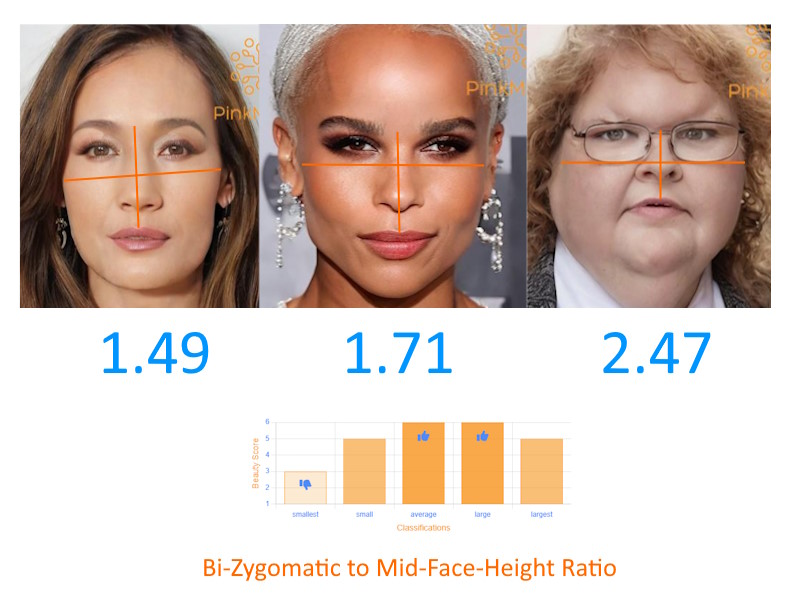Summary
Facial width-to-height ratio (fWHR) is a measure comparing the width of a person’s face to its height. The width is measured at the upper bizygomatic width, while the height is from the top of the eyelids to the top lip. This ratio has been proposed as a sexually-selected signal in humans. A research found that high fWHR values are around 2.08 and low values are around 1.77, indicating significant differences in their selected female samples. Similarly, another study identified fWHR ranges from 1.589 to 2.15 in an American sample and from 1.806 to 2.265 in a Turkish sample. Moreover, a research reported a positive association between fWHR and BMI, showing that weight significantly impacts facial structure, with heavier women having wider, more square faces. Similarly, a research indicates that BMI emerges as the major factor in determining sexual attractiveness, since it is a good predictor of health and reproductive potential.
Research
Facial width to height ratio (fWHR) is a measure of the width of a person’s face compared to its height – Kramer at el. (2021). Width is measured as upper bizygomatic width (the widest central bit of the face), height measurement used is upper facial height, from the top of the eyelids (approximately the nasion) to the top lip – Loehr at el. (2013) . Facial width-to-height ratio (fWHR) has been proposed as one such sexually-selected signal in humans – Carolyn at el (2016).
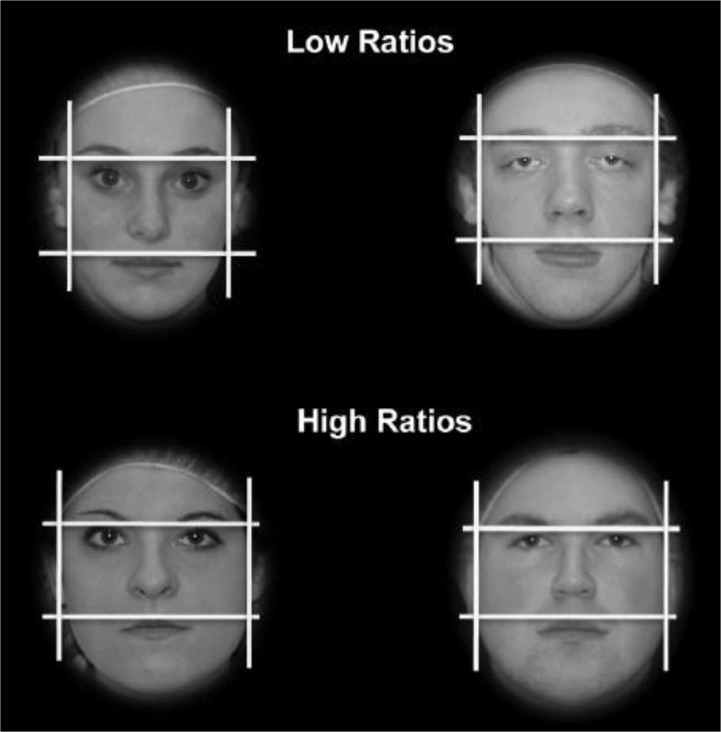
Deska et al. (2018) presented a study in the Journal of Personality and Social Psychology titled “Facing Humanness: Facial Width-to-Height Ratio Predicts Ascriptions of Humanity”. It identified fWHR values around 2.08 as high and values around 1.77 as low for their selected samples. Their pretesting revealed that these high and low fWHR female face groups differed significantly on fWHR.
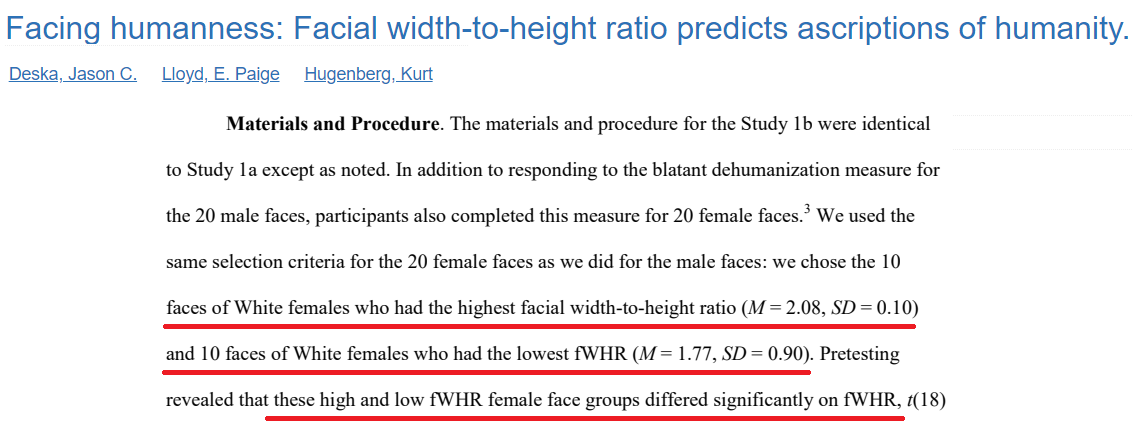
Similarly, Cassidy et al. (2023) found that for an American sample, the fWHR ranged from 1.589 to 2.15, with an average of 1.86. In a Turkish sample, the fWHR ranged from 1.806 to 2.265, with an average of 2.03.
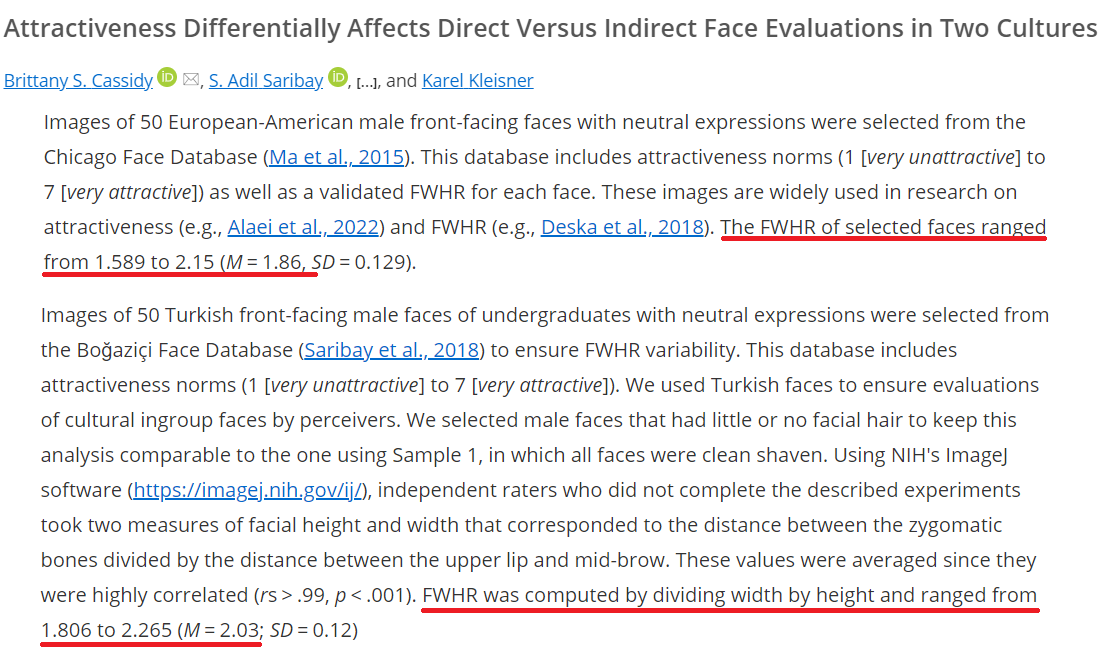
Coetzee et al. (2010) report a positive association between fWHR and BMI. Body weight plays a crucial role in mate choice, as weight is related to both attractiveness and health. People are quite accurate at judging weight in faces. The width-to-height ratio and cheek-to-jaw width ratio consistently, and significantly, relate to BMI, with heavier women having significantly wider and more square faces than lighter women. – Vinet at el (2009).
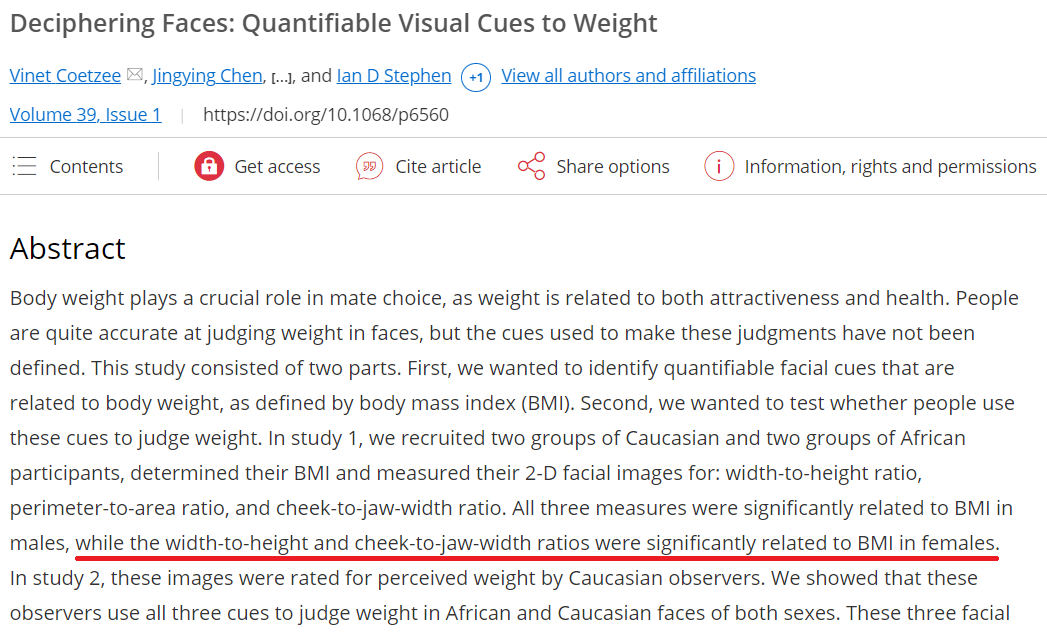
A research by Tovée et al. (2009) further supports that BMI is closely linked to attractiveness. With images of real women, body-mass index emerges as the major factor in determining sexual attractiveness, since it is a good predictor of health and reproductive potential.
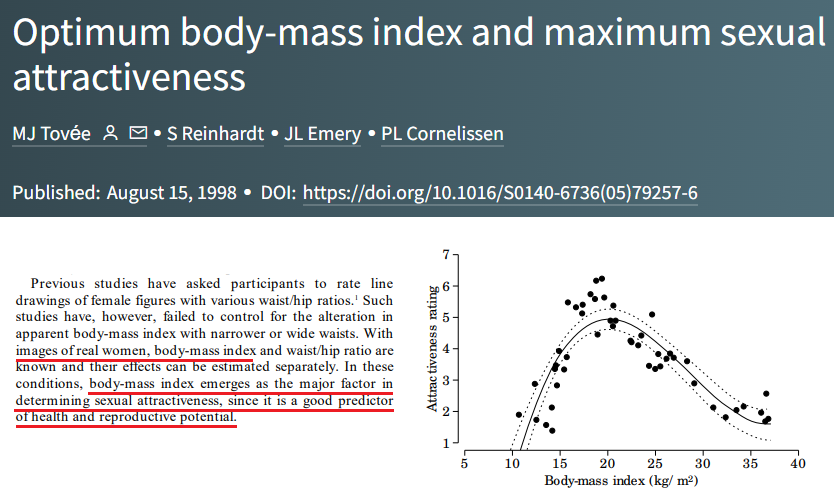
Reference
Kramer, RS; Jones, AL; Ward, R (2015-09-28). “A Lack of Sexual Dimorphism in Width-to-Height Ratio in White European Faces Using 2D Photographs, 3D Scans, and Anthropometry”. PLOS ONE. 7 (8): e42705. doi:10.1371/journal.pone.0042705. PMC 3413652. PMID 22880088.
Loehr, J.; O’Hara, R. B. (2013-08-23). “Finish Soldier Image”. Biology Letters. 9 (4): 20130049. doi:10.1098/rsbl.2013.0049. PMC 3730618. PMID 23658003
Deska, J. C., Lloyd, E. P., & Hugenberg, K. (2018). Facing humanness: Facial width-to-height ratio predicts ascriptions of humanity. Journal of Personality and Social Psychology, 114(1), 75–94. https://doi.org/10.1037/pspi0000110
Cassidy, B. S., Saribay, S. A., Yüksel, H., & Kleisner, K. (2023). Attractiveness Differentially Affects Direct Versus Indirect Face Evaluations in Two Cultures. Evolutionary Psychology, 21(3). https://doi.org/10.1177/14747049231186119
Carolyn R. Hodges-Simeon,1,* Katherine N. Hanson Sobraske,2 Theodore Samore,1 Michael Gurven,2 and Steven J. C. Gaulin2 “Facial Width-To-Height Ratio (fWHR) Is Not Associated with Adolescent Testosterone Levels” https://www.ncbi.nlm.nih.gov/pmc/articles/PMC4831733/
Coetzee, V., Chen, J., Perrett, D. I., & Stephen, I. D. (2010). Deciphering faces: Quantifiable visual cues to weight. Perception, 39(1), 51-61. https://doi.org/10.1068/p6560
Tovée, M. J., Reinhardt, S., Emery, J. L., & Cornelissen, P. L. (1998). Optimum body-mass index and maximum sexual attractiveness. The Lancet, 352(9127), 548. https://doi.org/10.1016/S0140-6736(05)79257-6
